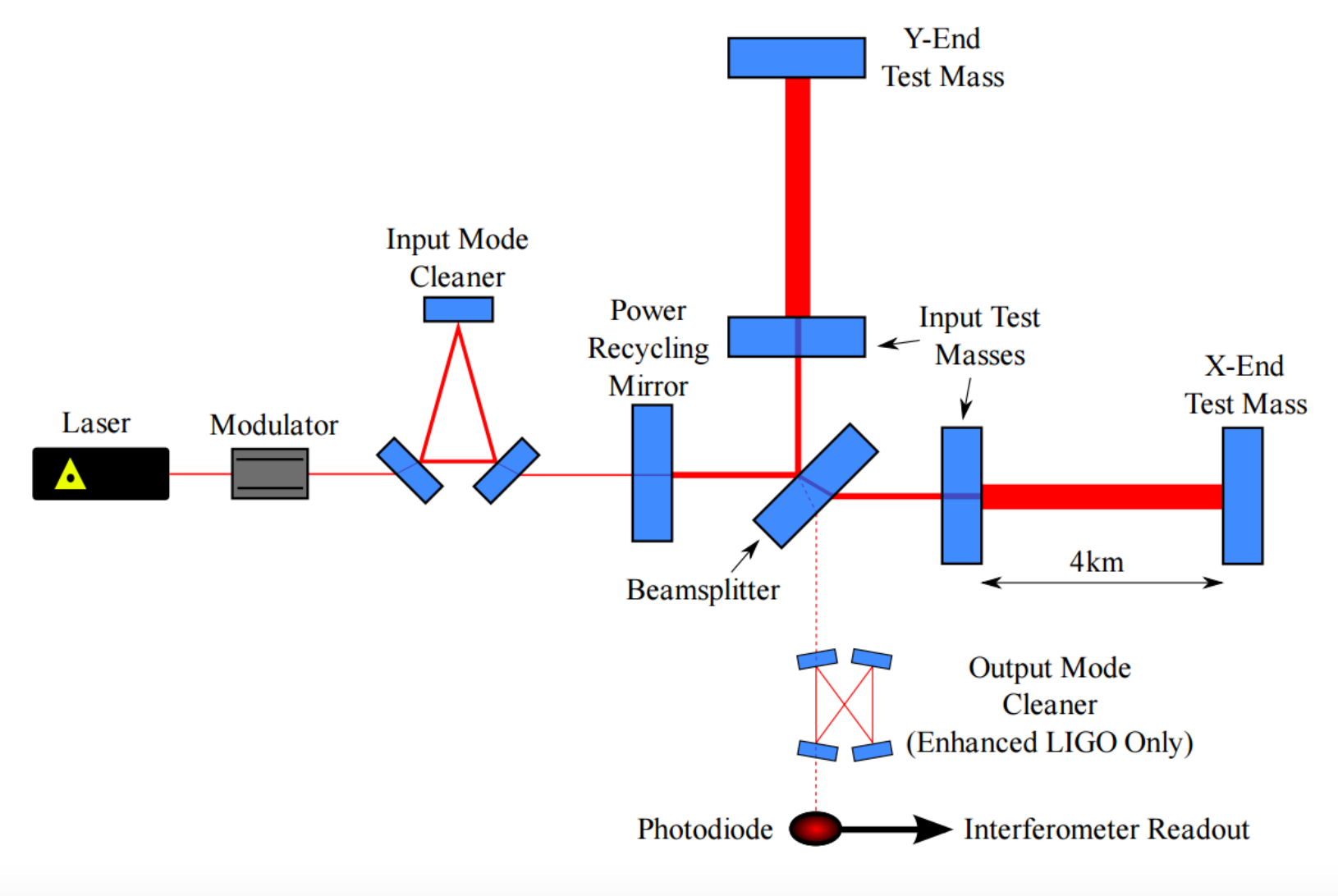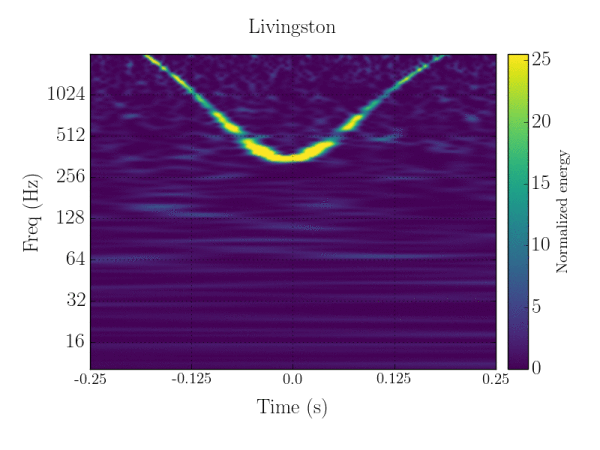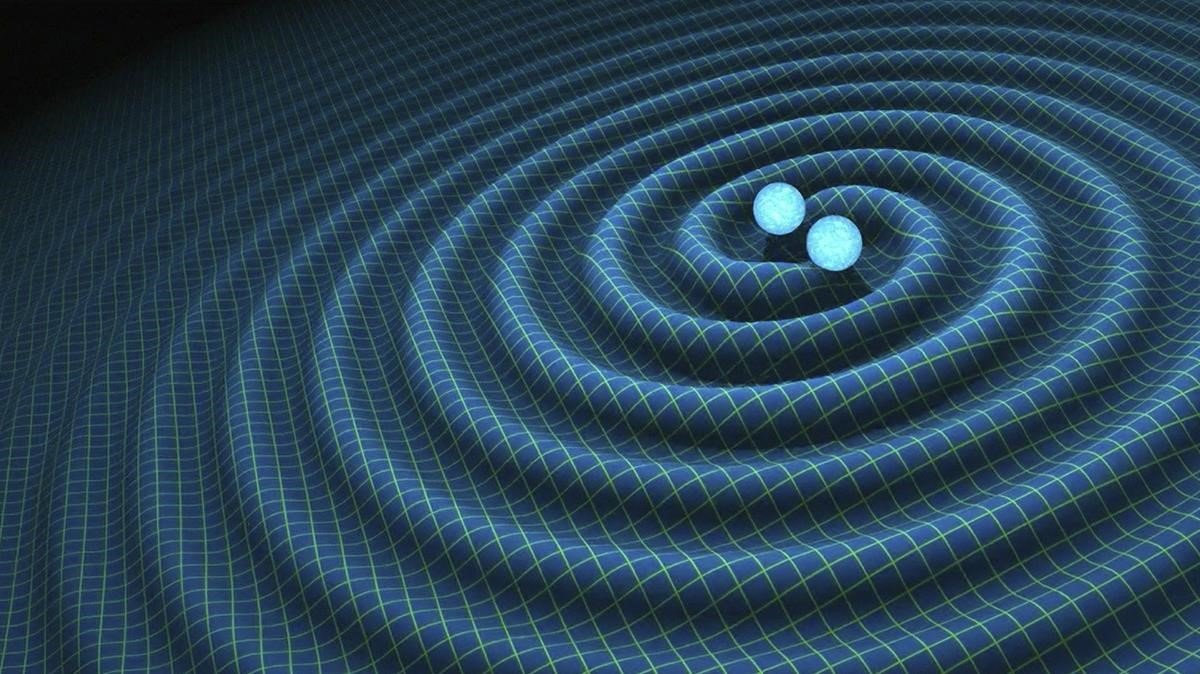Finding a ripple in spacetime
In 1916, the year after correctly formulating the theory of general relativity, Albert Einstein predicted that accelerating masses create ripples that propagate through the fabric
of spacetime known as gravitational waves. However, these ripples are so unbelievably minuscule that Einstein himself thought they would never be detected. A century after this prediction, the Laser Interferometer Gravitational-wave
Observatory (LIGO) has made the first direct detection of this elusive phenomenon.

Though gravitational waves are invisible, they do have a measurable effect on the space they travel through by causing distances to shrink and stretch. The LIGO detectors in Livingston, Louisiana and Hanford, Washington utilize laser
light as a very precise stopwatch to measure this effect. A very simplified diagram of the detectors is shown above. The detectors are identical Michelson interferometers, shooting powerful lasers down equal-length
cavities four kilometers in length. Since the speed of light is constant, if the race down the interferometer arms and back is a “tie” it means that the light traveled the exact same distance and the arms are exactly the same length.
LIGO is set up to have the beams destructively interfere in this case, resulting in no signal in the detectors. However, if one of these arms is stretched or shrunk, say by a gravitational wave, the race will not be a tie; the beam
traveling down the shorter arm will win the race and interfere with the beam traveling down the longer arm, creating a signal.On September 14th 2015, gravitational waves from the merging of two black holes reached Earth from over a
billion light-years away. The recently-upgraded LIGO was able to detect the minuscule squishing and stretching of space from this event - "feeling" the ripple in spacetime firsthand. An image of this detection in both detectors is
shown below, plotted in a similar fashion as the images you will be looking at in this project. From this one discovery, we made the first detection of gravitational waves and binary black hole systems, and tested Einstein's relativity
to a whole new level. To learn more about this discovery, see this video that was made by collaborators on
this project.

On December 26th 2015, LIGO also confirmed a second signal from a binary black hole inspiral. However, this new science has just begun and there are many more gravitational waves to discover.Glitches in the systemLIGO
is the most sensitive and complicated gravitational experiment ever built. To detect gravitational waves even from the strongest events in the Universe, LIGO needs to be able to know when the length of its 4-kilometer arms change
by a distance 10,000 times smaller than the diameter of a proton! This makes LIGO susceptible to a great deal of instrumental and environmental sources of noise. Of particular concern are transient, poorly modeled artifacts known
by the LIGO community as glitches. Though the reason for having two detectors separated by thousands of miles is to isolate the detectors from common sources of noise, glitches happen frequently enough that they often
can be coincident in the two detectors and can mimic astrophysical signals. Classifying and characterizing glitches is imperative in the effort to target and eliminate these artifacts, paving the way for more astrophysical signals
to be detected.

Classifying glitches using computers has proven to be an exceedingly difficult task. A family of data analysis algorithms known as machine learning have made huge strides over the past decade in classification
problems, though they usually require a large pre-classified dataset to operate effectively. However, human intuition has proven time and time again to be a useful tool in pattern recognition problems such as this. One of the innovations
of this citizen science project is that citizen scientists and computer algorithms will work in a symbiotic relationship, helping one another to optimally classify and characterize glitches. The general workflow will be:
1.
Citizen scientists will sift through the enormous amount of LIGO data to produce a robust "gold standard" glitch dataset that can be used to seed and train machine learning algorithms
2. Machine learning algorithms will learn
from this classified dataset to sort through more LIGO data, and choose the most interesting, abnormal glitches to be sent back to the citizen scientists
3. Citizen scientists will further classify and characterize these glitch
morphologies, determining new glitch categories to be used in the training of the machine learning algorithmsUtilizing the strengths of both humans and computers, this project will keep LIGO data as clean as possible, and help
to unlock more of the gravitational wave universe.
External source Gravity Spy
